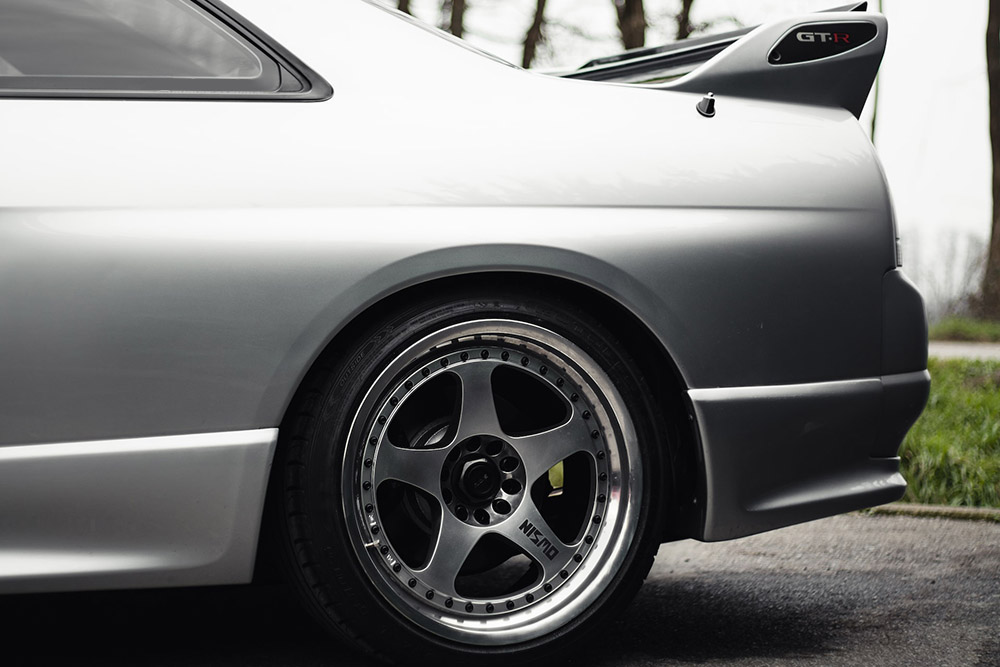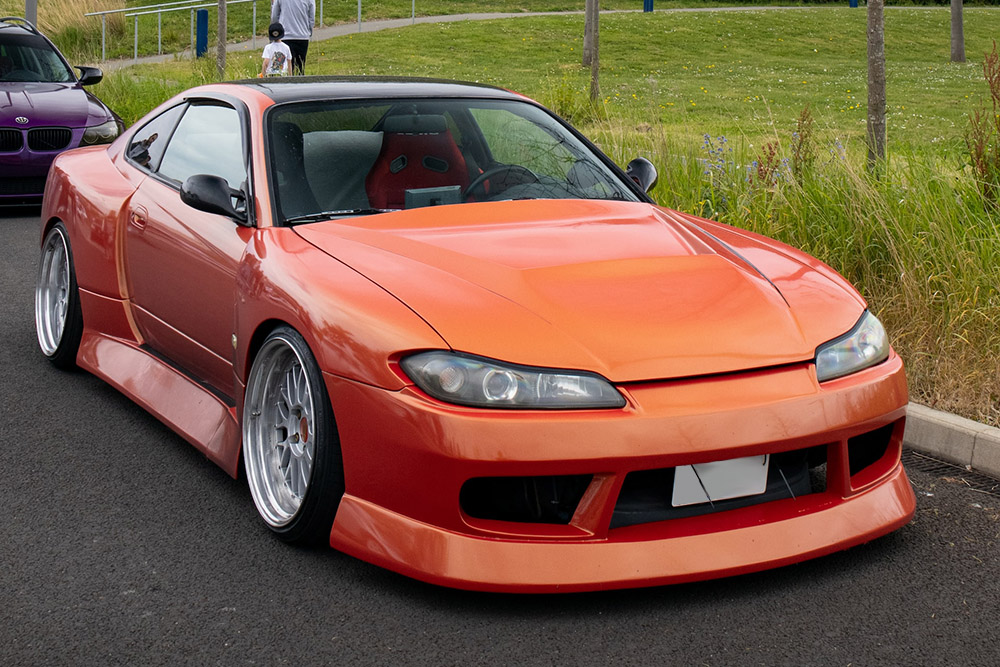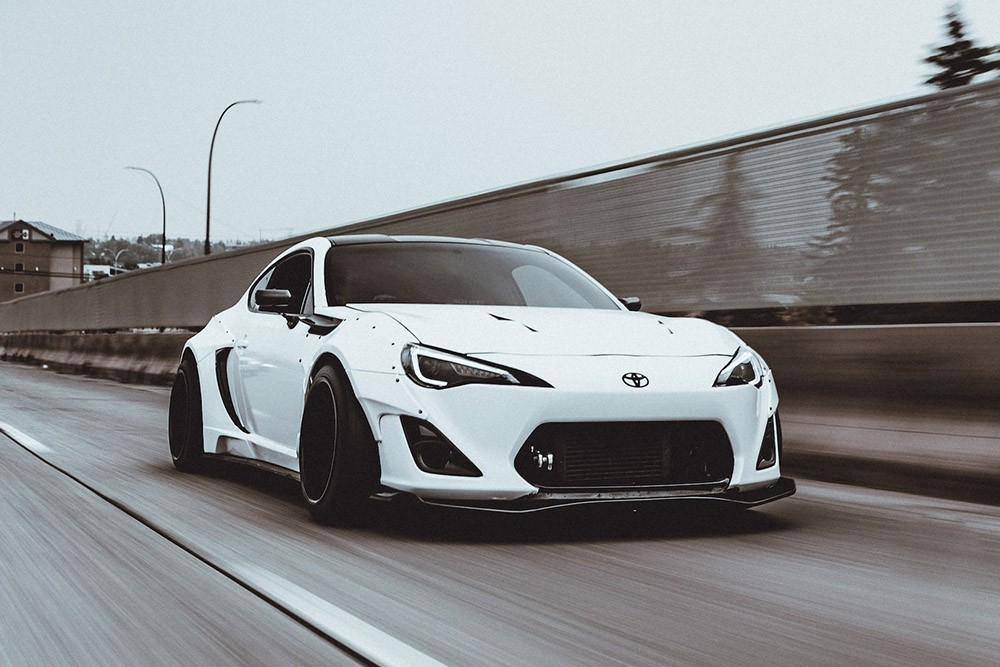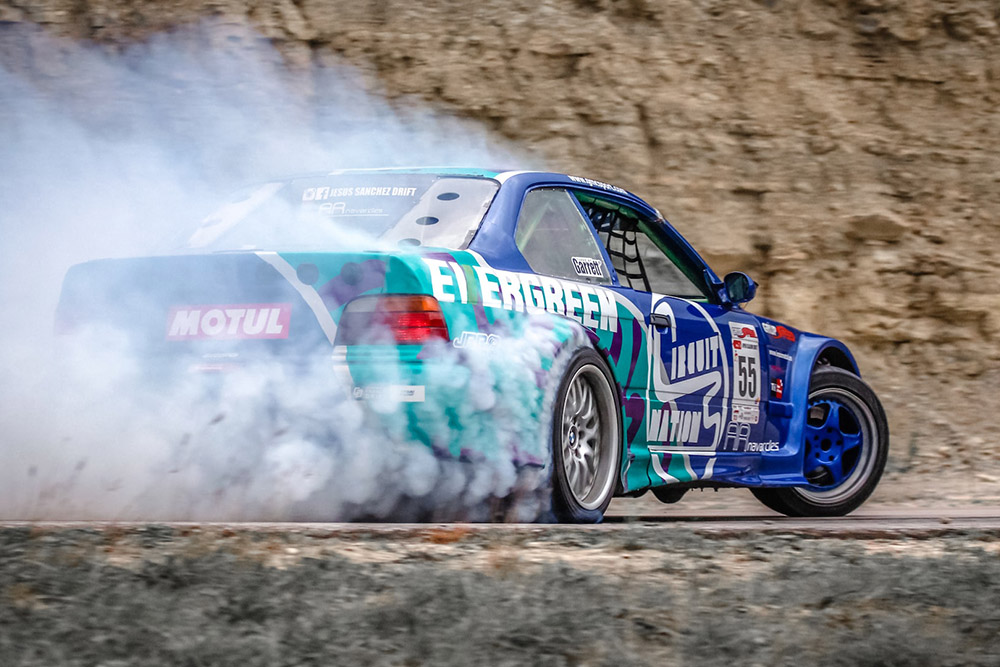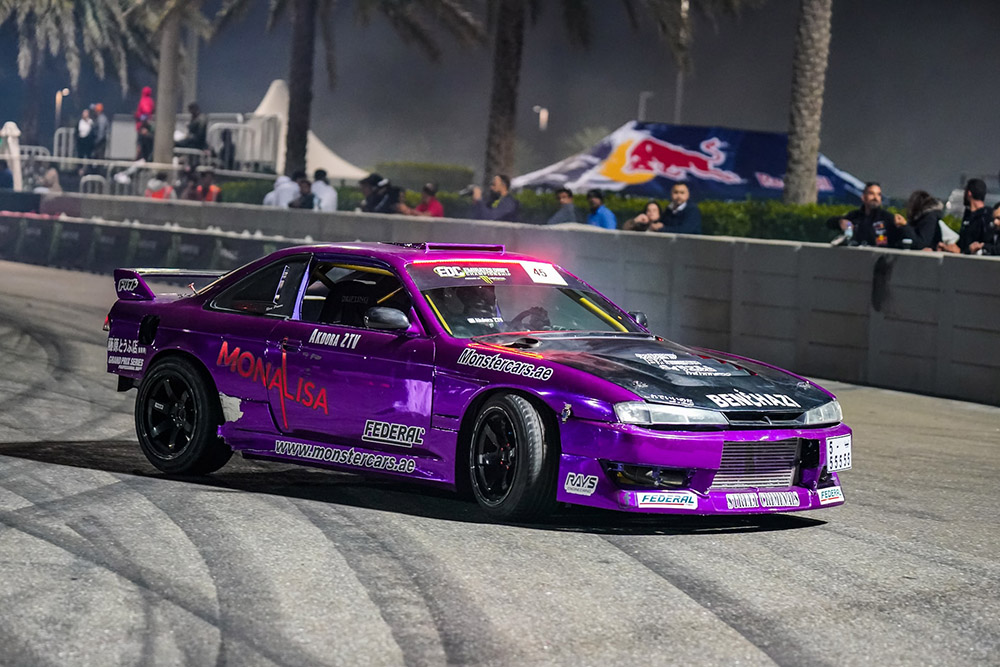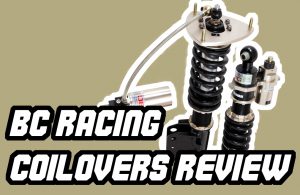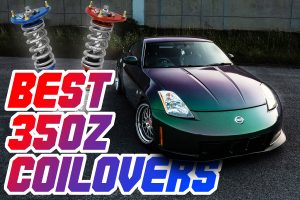Cheap Vs Expensive Coilovers – Are They Really Worth It?
If you’ve been looking at buying a coilover kit, no doubt you’ve noticed the vast range of options and the pretty significant price differences between some of the different models.
You may be wondering, what’s really the difference? And are the more expensive ones really worth it? Some coilovers can literally be up to 20x more expensive than budget versions. Are they really 20x better?
In this blog post I’m going to cover the difference between cheap vs expensive coilovers and what you can expect to get for your money.
Firstly, What Do Coilovers Actually Do?
To answer the question of what the difference is between cheap and expensive coilovers, I think it’s important to quickly cover what coilovers actually do and how this relates to the price difference.
Suspension is actually quite complex, there are a lot of moving parts (literally) which come together to affect both how the car rides and how it handles.
The original purpose of coilovers was to maximize handling performance on racecars and allow the race teams to quickly tune the settings and swap out the springs for different spring rates.
When it comes to coilovers sold on the market, their purpose can range from simply giving you the ability to adjust height, all the way to being a track specific setup with up to 4-way dampening adjustability.
Coilovers provide 4 main benefits:
Ride Height Adjustment
The vast majority of people who buy coilovers buy them for the reason that they allow you to adjust the ride height of your car. This is usually for aesthetic reasons, but is also comes with performance benefits (up to a certain point) as it lowers the center of gravity, helping to improve the car’s handling.
On coilovers, the body of the shock is threaded and allows you to raise or lower the car.
There are two ways a coilover can adjust ride height – either by the spring perch or by the shock body – and this will depend on the design of the particular kit.
There are pros and cons of both, but personally I prefer the ability to adjust ride height by the shock body, and you will find most coilovers on the market today use this design.
The ability to adjust the ride height is actually one of the simpler parts of the coilover and doesn’t in itself affect how they perform. However, changing the ride height will affect both handling and ride comfort.
Dampening Adjustment
Most coilovers on the market today give you the ability to adjust dampening. This allows you to adjust the dampers from soft to stiff and vice versa, and more advanced coilovers will allow you to independently adjust different parts of the damper, such as rebound and compression, or in extreme cases, low and high speed rebound and compression (known as 4-way adjustable).
The benefits of this are that you can fine tune both the ride and handling of the car, and quickly change it when you need to.
On a 1-way dampening adjustable system, this usually means that you can have one setting for the road, and then quickly adjust it for the track or a spirited drive, and then change back.
On dampers that give you 2 or more way adjustable dampening, this is particularly useful for the track, and will allow you to tune the car to handle exactly as you require.
Handling Improvement
The original purpose of coilovers was to produce the best handling performance possible, and this is still one of the main focuses of coilovers today.
A well designed coilover is made to balance ride comfort for the road while significantly improving handling performance over stock. This is usually done by lowering the center of gravity as well as stiffening up the chassis, but there are other factors that come into play such as stroke length and spring stiffness, which can get complex fast and are not the main focus of this article.
What’s important to know is that handling is usually going to be improved over stock, but that depends on how well the coilover was designed, which will be covered a little bit later in this article.
Camber Adjustment
On cars with MacPherson struts, most coilovers today also come with camber adjustable top mounts, which allow you to adjust the camber settings (usually on the front) much more than factory components would normally allow.
This is useful if you are trying to fine tune the car’s handling, but it can also be useful for road use, especially if going super low, as lowering the car does affect the suspension geometry and you may find that the factory components no longer allow you to set the alignment in the proper position.
So, What Are the Differences Between Cheap and Expensive Coilovers?
When it comes to the different coilover options, there can be some significant differences between what you get at the lower end of the price range vs what you get at the higher end.
How the Coilovers Are Tuned
One of the biggest factors in price is actually to do with how the springs and dampers are tuned. This has a significant effect on both handling performance and ride comfort.
On more expensive coilovers, what you will find is that companies spend a significant amount of time testing and tuning each kit, specifically the spring rates and damper valving, for each specific car model, to come produce a setup that meets purpose of the kit – whether that’s more comfort or more performance.
KW for instance, have a 7 post testing rig, which is the same as what F1 teams use to develop their suspension. They also do significant testing on the road and on the Nordschleife.
All this costs time and money, and this is where a large portion of the price difference comes in.
Cheaper brands, on the other hand, will usually estimate what each car needs based on some specs like weight, and then will just put together a kit with off-the-shelf dampers and spring rates that are in the right ball park.
Now, while this can work, often times it will result in suboptimal ride comfort as well as handling characteristics, which is when you hear complaints of a harsh or bouncy ride, or other similar issues.
Another issue you have with cheap coilovers is dampers which do not properly match the spring rates and are unable to properly do their job because the springs are too stiff for what they can handle. This will not only cause a terrible ride, but will also cause unpredictable and potentially dangerous handling.
Because these budget brands are trying to do things within a small budget, they will have to cut corners somewhere, and often that means that their kits are not tuned correctly. The cheaper you go, the worse this gets.
Handling Performance
Following on from the previous point and the way the dampers and springs are tuned (or not tuned), this has a pretty significant effect on the handling performance of the car.
Many people think that just because their car feels stiffer, that it handles better. But often this is actually not the case.
Having suspension that is too stiff will actually result in less tyre grip, which means worse handling and slower lap times.
It can also result in a car that does not handle bumps well, causing it to bounce and creating unpredictable handling and loss of grip over bumpy surfaces. On fast, bumpy corners, this is not a combination you want (ask me how I know).
With expensive coilovers, the companies will spend significant time fine tuning how each car handles with their kit, ensuring that it matches the car’s characteristics to get the best performance.
Cheaper brands, on the other hand, won’t have the budget to do this, and like I mentioned in the previous section, will just estimate kits together and hope for the best.
This becomes extremely apparent when you go to the track, as you will find that the same car with a better suspension setup will be able to post significantly faster lap times, all else being equal.
Ride Quality
Similar to the handling performance, the ride quality will depend a great deal upon how well the springs and dampers match the car, and each other.
As already mentioned, more expensive brands spend significant time testing and tuning their suspension to ensure good ride quality. There’s no guessing involved, they’ve already tested and tuned it and know it does a good job.
Cheaper brands, on the other hand, usually can only guess how well it will ride, and as a result you often hear complains about an overly harsh or stiff ride or bounciness.
Quality of Parts
The quality of the parts used is another big difference between cheap and expensive kits.
This is usually most noticeable when it comes to damper seals and the rust protection, which are probably the two most common failure points of a coilover kit.
While this becomes less noticeable as you go from say the $1000 range and upwards, the difference between kits on the cheapest end of the spectrum ($500) compared to kits that are $1500 or more is usually pretty significant.
While some people do have luck with cheap kits, you will often hear stories of dampers failing after a few months, arriving leaking from the box and things of that nature.
And even if that doesn’t happen, you can basically guarantee that they will rust and the adjustment collars will seize if you live in a snowy area, making them no longer adjustable and defeating the whole point of having coilovers in the first place.
In comparison, when you get a more expensive kit, they use far better quality components which have proven to last longer without issues.
KW for instance, use a special stainless steel called INOX-LINE for their shock bodies, which they guarantee with a lifetime warranty that it will never rust and the adjustment collars will never seize.
Lifetime
The life of the coilover is going to be significantly impacted by the quality of parts used.
As mentioned, more expensive kits tend to use higher quality parts, which last longer and can handle more abuse such as track driving. It’s not uncommon for a quality coilover kit to last up to 50,000 kms or more.
Budget coilovers, on the other hand, have to save money to be able to sell for so cheap, and that usually means lower quality parts that fail sooner. This is why you often hear of budget coilovers failing anywhere from leaking right out the box to 6 months down the line.
Damper Oil
Other common part that budget brands usually cheap out on is the damper oil. The damper oil plays a significant part in how well the dampers will actually do their job, especially when it comes to track use.
Low quality damper oil will not be able to handle high heat, and will become thinner at higher temperatures and be prone to foaming, both of which will cause the dampers to perform poorly and you’ll get what’s known as “damper fade”.
Higher quality brands, on the other hand, use high quality oil which has been specifically engineered to remain stable at high temperatures, giving you consistent damping during intensive driving.
Dampening Adjustability
Dampening adjustability is a common feature these days. However, companies have begun to use it as a marketing gimmick, offering a higher and higher number of “clicks” of adjustment, sometimes up to 40, as if that makes the dampers better.
The issue is that most of these kits don’t actually have anywhere near this many actual adjustment levels, and if you were to test the damper on a shock dyno, you’d fine that they would usually be closer to 3 steps rather than 30.
Higher quality kits, on the other hand, develop special adjustment technologies which actually make a difference at each click, and allow them to offer less clicks and yet still give you far more adjustment range than many of these kits that claim ridiculous numbers of adjustment.
Technology
The actual technology used the dampers plays a big part in how well they perform, and is another big difference between cheap and expensive coilovers.
Cheap coilovers usually have very little special technology, and often just copy designs that are already out there without really understanding what they do.
More expensive brands on the other hand develop technology through R&D and testing to get better performance.
A good example of this is the special valve that Ohlins developed, which actually expands with heat at the same pace that the oil gets thinner, in order to allow the damper oil to offer consistent damping at all temperature ranges. This make a huge difference on the performance of the dampers, especially on the track.
Cheaper brands simply don’t have the budget, and often the know-how, to develop technology like this, and as a result you won’t get things like this when you buy cheaper coilovers.
Rebuildability
Being able to rebuild your coilovers will ensure that they last a long time and you won’t have to buy a whole new kit every few years.
Pretty much all decent kits can be rebuilt, and even a lot of budget kits offer this option now as well.
However, on the super budget end of the price range, rebuildability is a rare thing, and unfortunately these also happen to be the coilovers with the highest chance of failure. This means that your chances of having to buy a new kit in the near future is high.
Warranty & Customer Service
While most coilovers offer warranty, even budget kits, the level of customer service and the chances of the company honouring the warranty are much higher with well known brands that sell more expensive kits.
They simply have more money to deal with issues, and are more likely to have the incentive of keeping their brand image positive and solving any issues that arise.
Budget brands, on the other hand, tend to have less of this incentive, and also have a smaller budget to deal with these kinds of issues. So while they may claim to offer warranty, you won’t know for sure how well that will go until you have to claim.
Should You Always Buy The Most Expensive Coilovers?
So, with all that being said, is the best option to go out and buy the most expensive coilovers you can find?
Not necessarily.
While there is definitely truth to the saying “you get what you pay for”, there are a number of factors which will dictate what the best option for you is, and that’s not always the most expensive one.
Unless you are seeking uncompromised performance at any cost, there does come a point where you hit diminishing returns and spending twice the money will not necessarily mean you get a kit twice as good for your needs.
For example, if you are just looking for a coilover kit for your daily driver, and you might do a track day or two a year, it does not make sense to spend $8000 on a Moton 3-way track spec kit, when a mid-range kit around $1000 will give you everything you need, and will probably be more suited to your needs of a comfortable daily driver.
Most people buying coilovers are just looking to lower their car, get a relatively decent ride and not have to replace them again in 6 months to a year, and don’t have an unlimited bank roll. For a situation like that, the Riaction GT1 or the BC Racing BR Series are going to probably be the best option for them, and they probably won’t be much happier at all with a kit costing 2-3x the price.
However, for someone else who has the money and is looking to do a lot of track driving with their street car, then buying a more expensive kit like the Ohlins Road & Track or Fortune Auto will pay off for them, as they will get the performance they are looking for as well as really good ride comfort, which you wouldn’t quite get from a cheaper kit.
And of course, if you are building a track car and all you care about is performance, then a top of the line track spec kit with all the customization and adjustment cannot be equalled.
Conclusion
At the end of the day, price does make a significant difference in what you get when it comes to coilovers. However that doesn’t mean that all kits under $2000 suck, and that the answer is always to get the most expensive kit.
Budget plays the biggest role in what coilover kit you get, and there are a number of decent options even under $1000. But if you are looking at getting something at the very bottom of the budget range, my advice would be save money and get something reputable, which will probably only cost you a few hundred dollars more.
For my opinion on the best coilover brands, click here.
- BC Racing Coilovers Review – Are They Any Good? - September 12, 2024
- 8+ Best Nissan 350Z Coilover Guide In 2025 - September 12, 2024
- Top 6 Best 2015 Subaru WRX Coilovers - September 12, 2024

